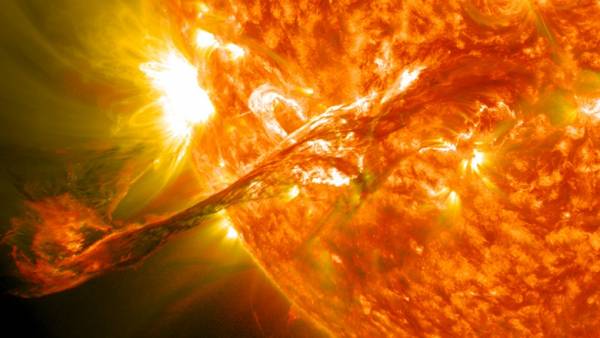The Sun found the rain and fog
Astronomers have studied the precipitation loss of plasma from the Sun’s atmosphere to its surface. It turned out that the “rain” of droplets of plasma go even where scientists do not expect. The study of this process should help to solve the riddle of the heating of the corona of the star. A report with the results was read at the conference of the Triennial Earth-Sun Summit in the United States.

The Sun, too, are precipitation only in the form of plasma, rather than water as on Earth, literally and physically, this is equivalent phenomena. This occurs when the hot plasma falls into the colder region, condenseries in drops and falls to the surface. Astronomers are interested in these processes in order to understand the mechanism of the heating of the corona of a star. It is known that the temperature of the upper rarefied layers of the Sun are visible during total Eclipse, about 100 times greater than the temperature of the visible surface of the photosphere. Astronomers have offered many potential explanations, but so far none of them got the status accepted.
In her report Emily Mason from the Catholic University of America in the United States spoke about the new observation of “coronal rain.” Scientists had previously observed them, but typically near the outbreaks. However, the new results suggest that they can go wherever there is adequate temperature reduction of the crown height.
The theoretical model predicted that the rain should go in the streamers — large loop-like structures of plasma size to six radii, the stars held a large-scale magnetic field between the groups of sunspots of different polarity.
They failed to detect rain, but it was in much smaller loops associated with the zero points of the topology of the magnetic field, the size of which is only 0.1 of the radius of the Sun. In one case precipitation in the form of plasma was observed in this area for 30 hours.
From the point of view of the theory it is strange, as in much smaller loops and the temperature difference should be much smaller, which makes it difficult to sedimentation. The idea of the authors is that in the streamer temperature is changing much more smoothly, because of which the plasma is not collected in large drops and falls in the form of mist that is impossible to fix with today’s devices. This hypothesis is confirmed by the fact that the researchers observed less noticeable rain in pseudostreaming that connect spots of the same polarity, and the size occupy an intermediate position. Astronomers hope to see even a small drop of the plasma with the help of new tools such as is now under construction in Hawaii solar telescope for Daniel Inoue.